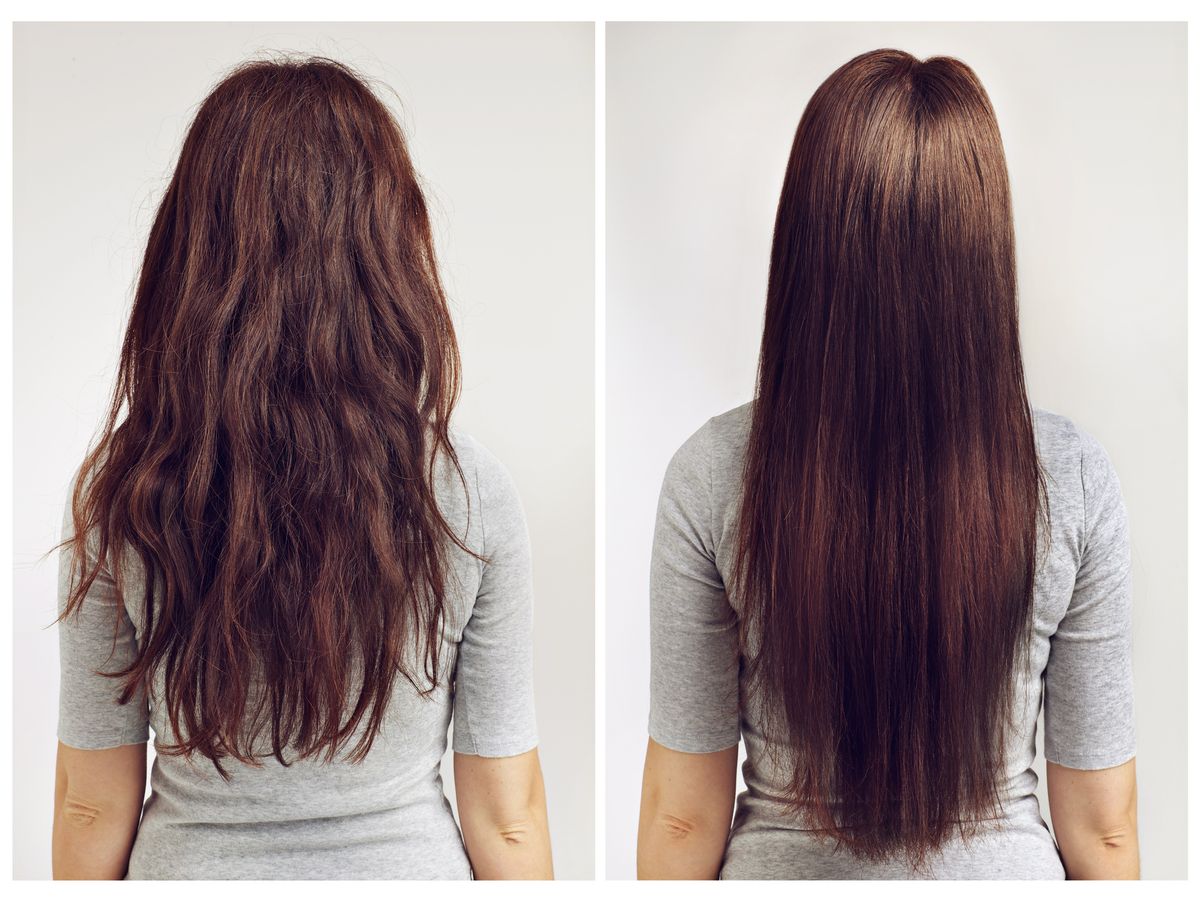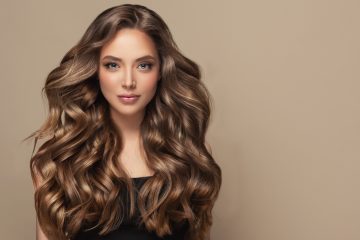In the quest for beauty, we often ignore the hidden dangers within our routines. Hair straightening treatments, celebrated for their ability to tame wild locks, have become ingrained in modern grooming rituals. However, beneath the glossy veneer and assurances of smooth hair lurk hazardous chemicals. Despite their innocuous appearance, these products harbor many toxins, posing potential risks to our health and well-being.
In this article, we explore the intricate web of toxicity in popular hair straightening treatments, revealing hidden dangers consumers overlook.
Understanding Toxic Ingredients
Many hair straightening treatments contain a cocktail of toxic chemicals that can pose critical risks to human health and the environment. One of the most common culprits is formaldehyde, used in many straightening formulas to help bond the hair’s keratin proteins.
While effective for straightening hair, formaldehyde exposure can lead to respiratory issues, skin irritation, and cancer with prolonged use. The American Cancer Society states that formaldehyde is “carcinogenic to humans,” according to the International Agency for Research on Cancer (IARC). The IARC’s findings link formaldehyde to nasopharyngeal cancer and leukemia.
Other harmful chemicals, such as sodium hydroxide, ammonium thioglycolate, and guanidine hydroxide, are also common in straightening products. These pose various health risks, including scalp burns and hormonal disruptions. This highlights the importance of informed decision-making about hair care products.
Health Implications of Chemical Exposure
Chemical straightening treatments offer convenience but carry potential health risks. Absorption through the scalp and inhalation of fumes can lead to various health issues. It’s necessary to be aware of these risks before opting for such treatments.
Chemical straightening treatments pose several health risks. Formaldehyde, a common ingredient, can cause respiratory irritation, leading to coughing and burning sensations. These products may also trigger skin allergies, resulting in itching, burning, and blistering. Also, certain chemicals are suspected to disrupt hormone function, potentially causing various health concerns. More research is necessary to understand the extent of these risks.
Beyond these immediate effects, recent studies suggest a possible connection between frequent chemical straightener use and heightened cancer risk. Specifically, uterine, breast, and ovarian cancers have been of concern. These findings raise significant concerns about the long-term health impacts of such treatments.
Individuals attributing their cancer to hair straightening products are pursuing legal action against manufacturers. Plaintiffs in hair straightener cancer lawsuits claim regular use contributed to their cancer development, sparking scrutiny of product safety. Regulatory oversight is questioned amidst concerns over the potential health risks associated with these treatments.
TorHoerman Law outlines that hair straightener cancer lawsuits aim to address various damages incurred by plaintiffs. These damages may encompass medical bills, lost wages, diminished quality of life, and loss of consortium. Also, plaintiffs may seek compensation for pain, suffering, emotional distress, permanent disability, and other related damages.
Regulatory Oversight and Consumer Awareness
Regulatory oversight of hair straightening treatments varies widely by region, with some countries enforcing strict limitations on harmful ingredients. However, in other regions, comprehensive guidelines are lacking, exposing consumers to deceptive marketing and undisclosed risks.
The absence of regulatory oversight in the beauty industry enables manufacturers to incorporate potentially harmful ingredients without adequate testing or transparency. This regulatory gap highlights the critical role of consumer awareness and empowerment in making informed decisions regarding personal care products. With greater awareness, individuals can navigate the market more effectively and prioritize products that prioritize safety and transparency.
Amid rising safety concerns, advocacy groups and regulators advocate for stricter rules and clearer labeling for hair straightening treatments. Despite these efforts, comprehensive measures are yet to be fully implemented. Thus, consumers are urged to educate themselves about the risks and opt for safer alternatives until more stringent regulations are in place.
Case Studies and Legal Implications
Several high-profile cases have highlighted the serious health risks and legal consequences of hair straightening treatments. Legal scrutiny has intensified due to the severe health implications associated with these products.
CNN reported 32-year-old Missouri resident Jenny Mitchell’s lawsuit against L’Oréal, alleging their hair straightening products elevate uterine cancer risk. Diagnosed in 2018, she underwent a hysterectomy, losing hope of motherhood. Mitchell, with no family history of cancer, asserts societal pressure normalized product use. Seeking over $75,000, she aims to hold companies accountable.
Class-action lawsuits target multiple companies for false advertising, health hazard warnings, and product safety negligence. These legal actions intensify scrutiny over hair straightening treatments, prompting demands for stricter regulations and industry accountability. The beauty sector faces mounting pressure to prioritize consumer safety.
With consumer awareness rising, manufacturers must prioritize safety and transparency in hair straightening products. Doing so can prevent expensive legal disputes and protect public health.
Alternatives and Safer Practices
Consumers are exploring safer alternatives despite the alarming health risks linked to conventional hair straightening treatments. They aim to attain smooth, manageable hair while safeguarding their overall well-being.
An increasingly favored choice involves heat-free styling methods, like air drying with gentle products or using heatless tools like foam rollers. These techniques lessen exposure to high temperatures and harmful chemicals, lowering the risk of hair and scalp damage. Heat-free styling offers a safer alternative for maintaining healthy hair.
Also, an emerging beauty trend involves natural, organic hair care products made from plant-based ingredients that are devoid of harsh chemicals. Data Bridge Market Research shows that the global organic hair care market was valued at $2.37 billion in 2022. It is projected to grow to $3.80 billion by 2030, with a CAGR of 6.10% between 2023 and 2030.
This forecast indicates significant growth potential for the organic hair care sector in the coming years.
Embracing safer alternatives and practices enables consumers to style their hair beautifully while minimizing exposure to toxic chemicals. This approach reduces the risk of adverse health effects associated with traditional hair care methods.
Salon Safety Practices
Mitigating risks linked to hair straightening treatments requires prioritizing salon safety. Salon professionals are vital in ensuring the health and well-being of clients through strict adherence to safety protocols. Their commitment to safety practices fosters a secure environment for clients seeking hair treatments.
Also, salon professionals must receive thorough training on product ingredients, application techniques, and safety protocols to mitigate risks effectively. Implementing stringent safety measures and adhering to industry best practices enables salons to create a safe environment for clients. This proactive approach ensures prompt responses to any adverse reactions during hair straightening treatments.
Frequently Asked Questions
What are the potential health risks associated with using chemical hair straighteners?
Chemical hair straighteners, while offering sleek results, can come with a health downside. Exposure to ingredients like formaldehyde can irritate the skin and respiratory system. Also, some studies suggest a possible link to cancers like uterine cancer.
Are there any natural or less toxic alternatives to chemical hair straightening treatments?
Yes, there are ways to achieve straighter hair with less risk. Natural conditioning treatments with coconut oil or aloe vera can promote smoother strands. Talk to a stylist about keratin treatments using a protein coating to relax curls and reduce frizz.
What legal recourse is available for those experiencing health issues due to chemical hair straightening treatments?
If you’ve suffered health problems after using chemical hair straighteners, legal options may exist. You could consult with a lawyer specializing in product liability to explore potential lawsuits against the manufacturer. These lawsuits often hinge on proving the product was defective and that the company failed to warn of potential risks.
Navigating Beauty’s Hazardous Terrain
The article has revealed the hidden dangers of hair straightening treatments, exposing consumers to toxic chemicals and health risks. It explores formaldehyde-laden formulas and highlights the shortcomings in regulatory oversight within the beauty industry. This journey through hazardous terrain sheds light on the risks inherent in pursuing certain beauty practices.
Despite challenges, hope arises with heightened consumer awareness, safer options, and strict salon safety practices. By prioritizing health and demanding transparency, individuals can confidently navigate the beauty landscape. Empowerment through informed choices safeguards personal well-being amidst industry complexities.



